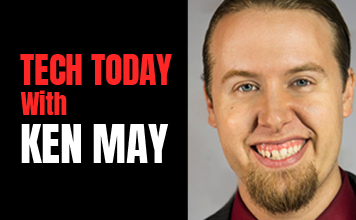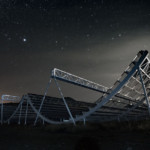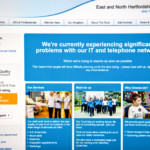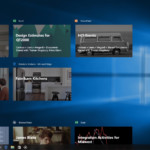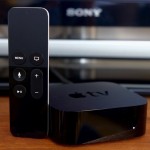This Laser Printer Creates High-Res Color Images Without a Single Drop of Ink
Anyone with a color printer knows that selling replacement ink cartridges is the quickest way to become a millionaire. But what if your printer never needed a single drop of ink to produce color images at impossibly high resolutions? A new laser printer can already do that by etching microscopic patterns onto sheets… Read more...
‘WannaCry’ ransomware attack spreads worldwide (update)
England's healthcare system came under a withering cyberattack Friday morning, with " at least 25 " hospitals across the country falling prey to ransomware that locked doctors and employees out of critical systems and networks. The UK government now reports that this is not a (relatively) isolated attack but rather a single front in a massive regionwide digital assault. #nhscyberattack pic.twitter.com/SovgQejl3X — gigi.h (@fendifille) May 12, 2017 The attack has impacted hospitals and transportation infrastructure across Europe, Russia and Asia. Organizations in dozens of countries have all been hit with the same ransomware program, a variant of the WannaCry virus, spouting the same ransom note and demanding $300 for the encryption key, with the demand escalating as time passes. The virus's infection vector appears to through a known vulnerability, originally exploited and developed by the National Security Agency. That information was subsequently leaked by the hacking group known as Shadow Broker which has been dumping its cache of purloined NSA hacking tools onto the internet since last year. The virus appears to have originally spread via email as compressed file attachment so, like last week's Google Docs issue, make sure you confirm that you email's attachments are legit before clicking on them. Also, make sure your computers are using software that's still receiving security updates, and that you've installed the latest updates available. Microsoft released a fix for the exploit used as a part of its March "Patch Tuesday" release, but unpatched Windows systems remain vulnerable. Update : Reuters reports a statement from Microsoft indicating that engineers have added detection and protection against the "Ransom:Win32.WannaCrypt" malware, so make sure your Windows Defender or other antivirus is updated before logging on to any corporate networks that may be infected. In a statement, a FedEx representative confirmed its systems are being impacted, saying "Like many other companies, FedEx is experiencing interference with some of our Windows-based systems caused by malware. We are implementing remediation steps as quickly as possible. We regret any inconvenience to our customers." Source: New York Times
New Windows look and feel, Neon, is officially the “Microsoft Fluent Design System”
Enlarge / Project Neon in the Groove Music app. (credit: Tom Hounsell ) SEATTLE—Earlier this year, pictures of a new Windows look and feel leaked . Codenamed Project Neon , the new look builds on Microsoft Design Language 2 (MDL2), the styling currently used in Windows 10, to add elements of translucency and animation. Neon has now been officially announced, and it has an official new name: the Microsoft Fluent Design System. The awkward MDL2 name exists because the original codename for the geometric, text-centric style introduced with Windows Phone 7 and incrementally iterated ever since was subject of a trademark dispute. That look and feel was internally named Metro, but Microsoft had to stop using the Metro name after pushback from a German supermarket chain . The company didn't initially have any particularly good name to refer to the styling formerly known as Metro, so many people continued to use that term for lack of anything better. It wasn't until a couple of months after dropping "Metro" that a new name, "Microsoft Design Language," was settled on. Our understanding is that Neon befell a similar fate; someone out there is using the Neon name, forcing Microsoft to pick a different appellation. This time around, however, the company has recognized that it's important to have an official name for the style that it can talk about and describe, giving us "Microsoft Fluent Design System." Read 6 remaining paragraphs | Comments
Networked self-driving cars are smarter and safer
You know what's better than one self-driving car on the road? Two, because then they can pool resources. Vehicle-to-vehicle (V2V) communication isn't anything new, of course, but researchers at Switzerland's federal institute of technology, EPFL , are taking things one step further. By wirelessly connecting the LIDAR, sensors and navigation systems of two cars in convoy, both can get a fuller picture of the world around them. Put simply, if two autonomous vehicles are driving down a road, then all they can "see" is the data from their own systems. But if you can connect your car, say, to the one immediately behind you, then both systems get a wider field of view and better situational awareness. In an overtaking situation, the car behind can use its counterparts systems to scan for hazards out in front, including cars in the opposite lane. The team at EPFL have worked to iron out the kinks in such a system using a pair of Citroen electric cars equipped with Mobileye sensors. Both vehicles had WiFi gear and computers in their trunks, which helped the pair co-ordinate with each other on the road. One big issue, early on, was that both systems would count the same obstacle twice, once from each data source. Now that those problems have been resolved, bigger issues, like the fact that all of this computation has to be done on the fly, can be tackled. The hope is that, eventually, every autonomous car on the road will be talking to one another to ensure that crashes and angry fights at merge points are kept to a minimum.
Windows Server will add the Linux subsystem, join the Insider program
(credit: Microsoft) SEATTLE—When Microsoft first introduced the Windows Subsystem for Linux (WSL) at last year's Build developer conference , it said that it was doing so to make developers who were familiar with the Linux command line feel comfortable on Windows . The immediate and inevitable question was "Well, what about Windows Server?" Development is one thing, but what if organizations wanted to occasionally deploy their Linux software on Windows? Although Windows Server 2016 and Windows 10 share many components, the Server operating system hasn't thus far included WSL, consistent with the "developer only" rationale. But that's going to change: at Build this week, Microsoft announced that WSL will be included in Server later this year. Microsoft still isn't positioning this as a way of running Linux server in production on Windows; rather, the company says the addition will be useful for administrative tasks. With WSL, Windows can run scripts written for Linux. But we're hard-pressed to see things stopping there; it seems inevitable that at some point, Windows will offer the ability to run Linux server software as one of its features. Read 3 remaining paragraphs | Comments
WCry is so mean Microsoft issues patch for 3 unsupported Windows versions
Enlarge (credit: Health Service Journal) A day after a ransomware worm infected 75,000 machines in 100 countries, Microsoft is taking the highly unusual step of issuing patches that immunize Windows XP, 8, and Server 2003, operating systems the company stopped supporting as many as three years ago. The company also rolled out a signature that allows its Windows Defender antivirus engine to provide "defese-in-depth" protection. The moves came after attackers on Friday used a recently leaked attack tool developed by the National Security Agency to virally spread ransomware known as WCry . Within hours, computer systems around the world were crippled, prompting hospitals to turn away patients and telecoms, banks and companies such as FedEx to turn off computers for the weekend. The chaos surprised many security watchers because Microsoft issued an update in March that patched the underlying vulnerability in Windows 7 and most other supported versions of Windows. (Windows 10 was never vulnerable.) Friday's events made it clear that enough unpatched systems exist to cause significant outbreaks that could happen again in the coming days or months. In a blog post published late Friday night , Microsoft officials wrote: Read 9 remaining paragraphs | Comments
California utility augments 1,800 air conditioning units with “ice battery”
Ice Energy A Santa Barbara-based company called Ice Energy has partnered with NRG Energy to deliver 1,800 “ice batteries” to commercial and industrial buildings served by electric utility Southern California Edison (SCE). The units are expected to reduce air conditioning bills by up to 40 percent and eliminate 200,000 tons of CO 2 over the next 20 years. Ice Energy has been building ice-based cooling systems since the early 2000s. Much like pumped storage or compressed air “batteries,” Ice Energy essentially stores electricity by drawing power from the grid at non-peak times to freeze water in a special container. Then at peak times, when the cost of electricity is high and grid operators are struggling to keep up with demand, Ice Energy’s systems kick in and use that block of ice to cool the space that the air conditioning unit normally serves. Read 14 remaining paragraphs | Comments
Biggest Global Cyber Attack Ever? 10 WannaCry Ransomware Facts
A global cybersecurity attack involving WannaCry ransomware crippled Microsoft Windows computers across the globe today. Here are 10 facts to know. The post Biggest Global Cyber Attack Ever? 10 WannaCry Ransomware Facts appeared first on ChannelE2E .
Windows 10 Timeline remembers everything you did on your PC
One of the more intriguing features Microsoft will include in this fall's Windows 10 Creators Update is Timeline. As the name suggests, it's a way for you to move backwards in time and see things you were working on in the past and resume what you were doing. Microsoft described it as a visual timeline of everything you were doing on your computer, and you can jump back into files, applications and websites where you left off. Introducing Timeline. Easily jump back in time to continue where you left off. #Windows10 #MSBuild pic.twitter.com/e3gxhXnp6W — Windows (@Windows) May 11, 2017 Timeline lives in the Windows app switcher. When you click it, you'll see your active apps, but below that you'll see what you were running earlier in the day. Clicking down on one of those things that you were using earlier will pop it open just as you were using it before. This works across multiple devices, as well -- when you open up another Windows device where you're signed in, you can resume the tasks you were using before. This will even work across other devices like an iPhone using the Cortana app. If you're somewhere where you have Cortana, it'll prompt you to continue working on whatever you were doing before. If you don't have the specific app installed on your phone, it'll help point you to the right app as well. At first glance, it sounds a little bit like the Time Machine backup feature that Apple has included in macOS for years now. But Time Machine is more of a file backup system that lets you go back and see earlier versions of files that you might want to restore. Microsoft's Timeline covers applications and websites as well as just files, and it doesn't require an external hard drive, as it's not really a true backup system in the way Time Machine is. Indeed, Timeline appears more like Microsoft's answer to Continuity, a feature Apple build into macOS and iOS that lets you pick up and resume work across whatever Apple device you're using. Timeline is just one feature in the forthcoming Creators Update, which features a host of tools for using Microsoft's software and services across devices. The "Microsoft Graph" set of APIs will let you pick up and continue work across multiple devices and will iOS and Android as well as Windows. It'll also let you have a "universal clipboard" across your devices. Click here to catch up on the latest news from Microsoft Build 2017.
Latest Apple TV rumor points to a TV guide for video apps
At the WWDC 2016 event , Apple revealed a number of improvements on the way for the Apple TV, including a new feature called single sign-on . That would let cable TV subscribers log in once, and immediately have all their supported apps authorized without needing to log in (often repeatedly) within each individual app. Now Recode cites industry sources saying that Apple is working on "digital TV guide" for the Apple TV and its other devices that would display content from sources like Netflix and HBO all in one place. The plan is described as growing from Apple's previously rumored plan to offer a TV package of its own. In this iteration, Apple wouldn't sell content, just create a showcase for others, and it has reportedly requested metadata from the providers to fill out its guide. The Xbox OneGuide at launch in 2013. If the plan comes to fruition, then Apple will be retreading ground covered by others. Microsoft may have the most ambitious attempt with the Xbox One's OneGuide that blends live TV and apps while relying on an HDMI passthrough and IR blasters to pull in content from the cable box, but the UI and universal search on devices like Amazon's Fire TV and the Roku platform serve similar functions. Apple already set up its move by bringing the Siri remote and voice search with its new Apple TV box, and when it announced single sign-on in June it mentioned the feature would work on iOS as well. The major remaining questions are if customers will be able to use the feature, and if they can, will they want to? On Xbox, Microsoft had limited success working with the cable TV guard. It did manage to get Comcast to allow logging in with HBO Go and other apps, but Comcast killed its Xbox 360 app after a while, and Verizon's FiOS TV app for Xbox One suffered a similar fate earlier this year . The revamped OneGuide that launched last year. Apple's challenge could be to build a guide that's easier to access than simply diving into apps like Netflix or Hulu and poking around there. On Xbox, app channels do a good job of highlighting what's best inside each app, but they're not especially personal or deep. The OneGuide got a lot of attention during the Xbox One's initial introduction a few years ago and is a big part of the new experience rolled out at the end of 2015 , but it didn't merit a mention in details of the latest mid-year update . I don't even see an app channel for Netflix on my Xbox One, and securing support from such a major provider would be key for Apple to launch any kind of guide. The only problem is getting all of those different providers to accept sharing space in a UI that none of them control -- good luck doing that. Source: Recode

